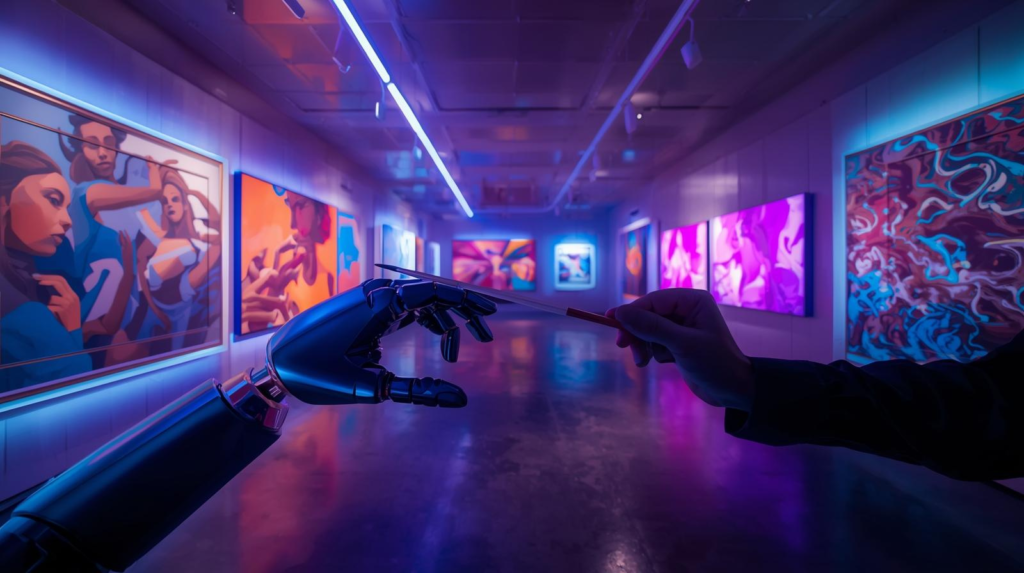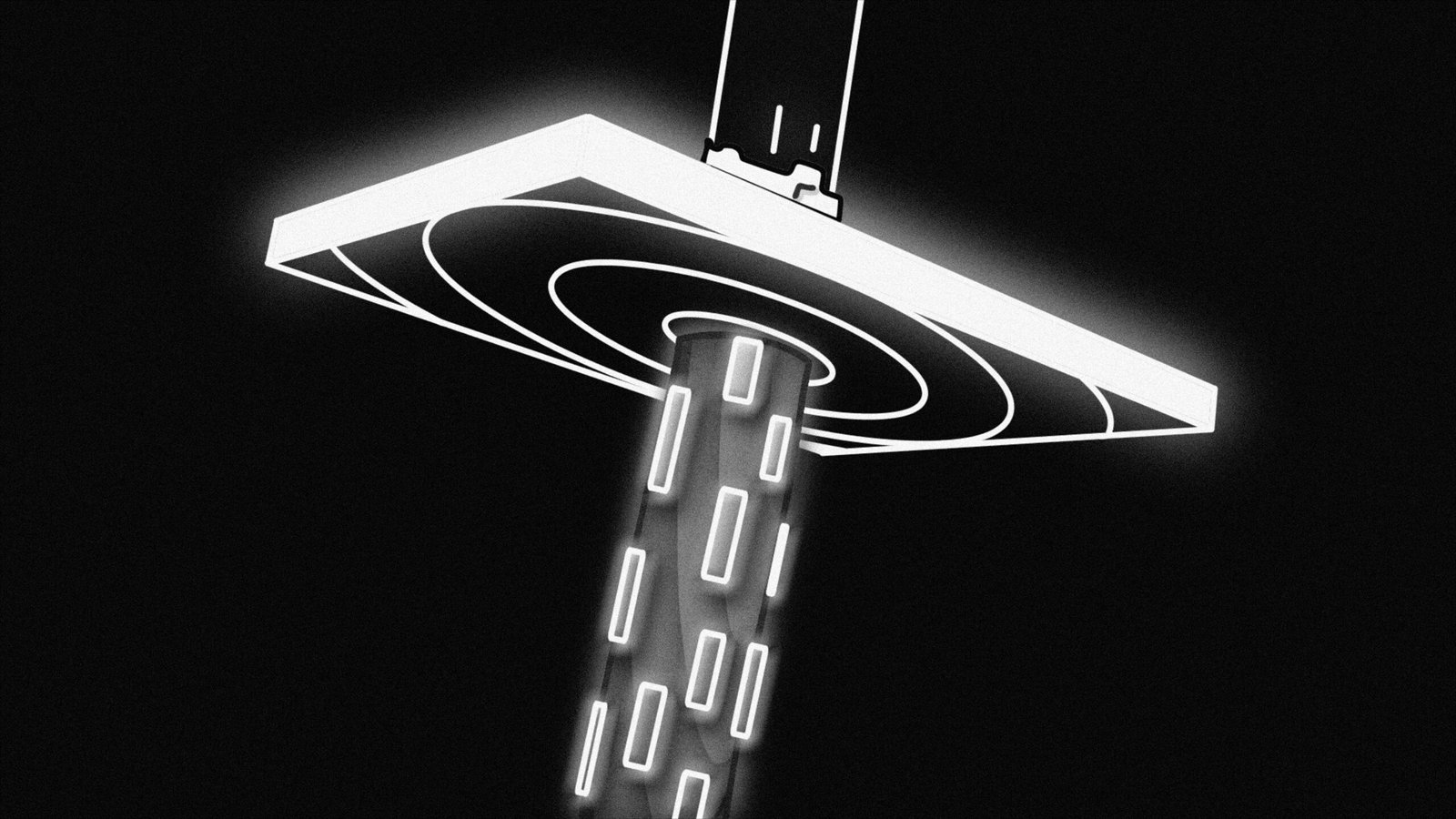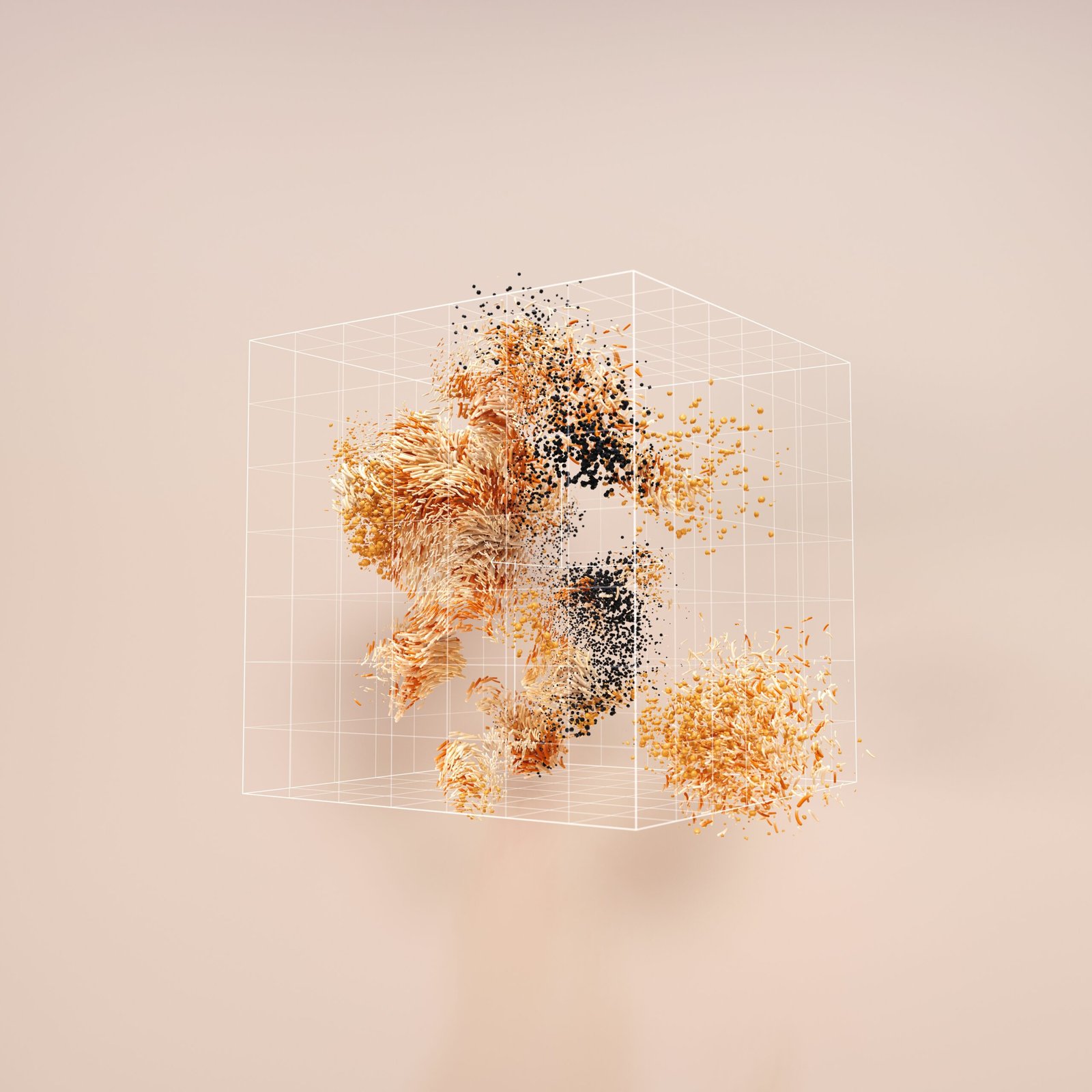
The art world has always been a space of disruption. From the invention of the printing press to the rise of digital photography, every new tool has sparked debate about what constitutes “true art.” Today, the latest controversy centers on artificial intelligence. With tools like DALL·E, MidJourney, and Stable Diffusion allowing anyone to generate complex digital images in seconds, artists, critics, and technologists alike are asking: is this the dawn of a new artistic renaissance, or the decline of human originality? The AI-generated art revolution or threat question is not just about technology — it’s about the very essence of creativity. At AixCircle, we believe it is crucial to explore both sides of this debate to understand what the future holds for art in the age of machines.
The Rise of AI in Creativity
Over the past few years, AI in creativity has grown from a niche experiment to a mainstream phenomenon. What once required specialized coding skills or advanced design knowledge is now accessible to anyone with an internet connection. By simply typing a prompt such as “a sunset over futuristic Tokyo painted in the style of Van Gogh,” users can generate stunning visuals that rival professional digital art. This accessibility is at the heart of the AI-generated art revolution or threat debate. On one hand, AI democratizes artistic expression, giving voice to people who might lack traditional artistic training. On the other, critics argue it undermines years of skill development by professional artists.
This democratization reflects a broader trend in technology: the removal of barriers between creators and audiences. Just as social media made everyone a publisher, AI art tools are making everyone an artist. But does this mean traditional artists will be overshadowed, or will they adapt and evolve alongside AI? This tension fuels the AI art debate, pushing society to reconsider what counts as authentic creativity.
AI as a Creative Partner, Not a Replacement
One perspective in the AI art debate is that AI should not be seen as a competitor to artists, but as a collaborator. Just as a paintbrush, camera, or digital software became extensions of human creativity, AI can serve as the paintbrush of the 21st century. Instead of replacing the artist, AI tools enhance human imagination by generating variations, suggesting new styles, and speeding up labor-intensive processes.
At AixCircle, we view AI and human creativity as complementary forces. For example, a fashion designer might use AI to brainstorm hundreds of patterns before choosing one to refine manually. A filmmaker could generate concept art for storyboards, saving time and money in pre-production. These examples highlight how the AI-generated art revolution or threat debate often oversimplifies the issue. The reality may be less about replacement and more about augmentation — humans guiding AI tools with vision and intent.
The Ethical Dilemma: Borrowed or Stolen?
Yet, even as AI fuels creative possibilities, it raises urgent ethical questions. Many of these systems are trained on vast datasets of existing artworks scraped from the internet, often without the knowledge or consent of original creators. Critics argue this practice amounts to plagiarism on a massive scale, with AI “borrowing” from human artists without acknowledgment. Supporters counter that all art is derivative to some extent, with humans themselves inspired by predecessors and peers.
This ethical tension lies at the center of the AI-generated art revolution or threat discourse. The AI-generated art ethics debate forces us to ask: what happens when a digital image generated in seconds resembles the style of a living artist who spent decades refining their craft? Should those artists receive credit or compensation? Without clear guidelines, the AI art future risks creating a creative economy that undervalues human originality while rewarding algorithmic output.
The Case for AI as a Creative Revolution
Supporters of AI-generated art argue that we are witnessing nothing less than a creative revolution. Just as photography was once dismissed as “mechanical” and not a legitimate art form, AI art faces skepticism today. Over time, however, photography became one of the most respected artistic mediums, giving rise to legendary photographers who used cameras in deeply expressive ways.
The AI-generated art revolution or threat debate echoes this historical trajectory. Proponents see AI art as a new medium, one that expands the boundaries of what is possible. By enabling hybrid forms of expression — blending text, sound, and visuals — AI opens creative dimensions that were once unimaginable. The AI art debate in this sense is not about whether AI is art, but about how artists will use it to tell new stories. For innovators and visionaries, this is less a threat and more a renaissance.
The Case Against AI: A Threat to Human Artists
Opponents, however, view AI-generated art as an existential threat to traditional creators. Unlike photography, which required human skill in composition and timing, AI art can be generated instantly with minimal effort. This disrupts markets where artists once thrived — from digital illustrations and book covers to advertising visuals. Many freelance artists already report losing clients to AI platforms that deliver faster and cheaper results.
This darker side of the AI-generated art revolution or threat conversation underscores the risk of undervaluing human labor. The AI art debate becomes not just about creativity but about livelihoods. When an algorithm can mimic the style of a working illustrator in seconds, the economic implications are profound. Critics warn that unless safeguards are established, AI and human creativity could become unbalanced, with machines dominating and human voices silenced.
Navigating the Middle Ground: Regulation and Responsibility
The truth, as often happens, may lie somewhere between revolution and threat. The AI-generated art ethics debate suggests that regulation and accountability will be critical in shaping the AI art future. Clear copyright frameworks, opt-in training datasets, and attribution models could help balance innovation with fairness. For instance, some propose that AI tools should include mechanisms to credit or compensate artists whose works influence generated outputs.
At AixCircle, we believe in building ecosystems where AI in creativity thrives without undermining human contribution. The AI art debate should not paralyze progress, but it should also not dismiss the concerns of artists. Ethical design, transparent practices, and human-centered policies will determine whether AI becomes a true partner in art or a force that destabilizes creative industries.
Cultural Impacts: Redefining Creativity
Beyond economics and ethics, the AI-generated art revolution or threat raises deeper cultural questions. If anyone can generate a masterpiece in seconds, does the concept of mastery itself lose meaning? Or does it simply evolve into a new form, where creativity lies not in brushstrokes but in prompts, curation, and storytelling?
This is where the AI art future becomes particularly exciting. Imagine collaborative platforms where poets, musicians, and visual artists work alongside AI, blending their crafts into immersive multimedia experiences. Here, AI and human creativity fuse into something greater than either could achieve alone. Instead of reducing creativity, AI might expand its very definition, reshaping how societies value and experience art.
Conclusion: Revolution, Threat, or Both?
The question of whether AI-generated art is a revolution or a threat does not have a simple answer. Like every disruptive technology before it, AI challenges established norms while creating new opportunities. The AI-generated art revolution or threat debate captures the paradox of progress: the same tools that democratize creativity may also destabilize creative industries.
At AixCircle, we believe the future of AI in creativity will depend on the choices we make today. If we embrace ethical AI-generated art practices, protect human originality, and foster collaboration rather than competition, the AI art future could indeed be a renaissance. If we ignore these issues, however, the concerns of critics may prove justified, and AI could become a threat rather than a tool.
Ultimately, the story of AI and human creativity is still being written. The question is whether we will allow fear to define it, or whether we will rise to the challenge and use AI as a catalyst for new forms of expression. The revolution is here — but whether it feels like liberation or loss will depend on how we, as a society, choose to paint the future.

